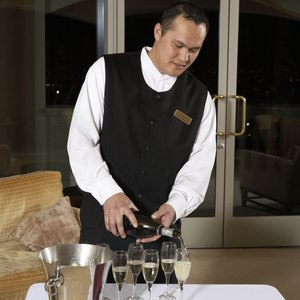
With more and more goods and services being delivered, picked up or paid for with digital apps, it’s getting confusing when it comes to leaving a tip. Whether you’re paying for a meal, manicure or other item or service, it’s a good idea to make sure you know how to leave a tip correctly, especially if you are making it part of your overall ticket and want the amount on the tip receipt for your records.
What Is The Right Tip Amount?
Traditionally in the U.S., tipping in restaurants has been 15 percent on food and 10 percent on a bar bill. The tip did not cover the taxed amount – you tip for service, not a government tax. To make things easier, most people tipped 15 percent on the entire restaurant bill, including their drink and tax.
Today, many restaurant owners and servers have started quoting 20 percent as their preferred tip. In any case, you can leave more than the standard amount for excellent service, either as a reward/thank you, or to keep a particular server or bartender attentive in the future if you’re a regular.
Consumer Reports provides a list of recommended tip amounts for other service providers, such as hairdressers, manicurists, limo and cab drivers, food delivery workers, hotel housekeepers and valet parking attendants.
Tipping on a Receipt
When you order food digitally, you might be given the option to include a tip. When you receive your receipt for your final bill, the tip will be calculated based on the percentage or dollar amount you agreed to pay.
If you will be filling in the amount manually on a paper receipt, or entering, signing and approving a digital receipt, you can include your tip at that time. When you receive a paper receipt, the slip of paper will show your food total, tax and total bill amount.
Underneath that amount, you’ll see the word “Tip” followed by a blank line. After that, you’ll see the word “Total” and a blank line. If your food, drink and tax total was $20 and you want to leave a 20 percent tip, write $4 on the “Tip” line, then $24 on the “Total” line.
You will usually receive two pieces of paper – one will have “Customer copy” at the bottom or top, the other will have “Merchant Copy” at the bottom or top. If writing your tip on the top copy does not create a readable impression on the bottom copy, you’ll need to fill in the tip amount on the merchant copy for your server to be paid. If you want the tip receipt information for your personal records, you’ll fill out the customer copy and keep it.
Read More: Form 1040: What You Need to Know
Calculating a Tip on Tip Receipt
The quickest way to calculate your tip is to tip on one amount (not separate amounts for food and drink). If you want to tip 15 percent, simply take 10 percent of your bill, then half of that to figure out your tip amount. For example, if your bill is $14, 10 percent is $1.40, half of that (5 percent) is 70 cents, so your 15 percent tip on $14 is $2.10.
Many people round up the cents on their tip amounts for convenience's sake. You can carry a tip calculator card in your wallet or purse, or use an online tip calculator for more convenience.
Beware of Table Charges
If you dine with friends from another country, you might notice that they round up their bill to the nearest dollar amount on the “Tip” line. For example, you get a restaurant bill for $48.85 and your friend adds 15 cents to get an even bill number. That’s because the tip has already been added as a “table charge” (or she thinks it has).
When you are traveling overseas, restaurants often add a table charge to your bill. In Europe, for example, you’ll often be charged a table charge, which is the server’s tip. Many servers don’t tell foreign tourists about this because they end up getting the unnoticed table charge (especially if the tip receipt is in French, for example) and a tip. A 10 percent tip is a big tip in Europe, according to travel guru, Rick Steves.
Some American restaurants automatically add 15 percent or 20 percent to tables of eight or more diners to ensure a server doesn’t work hard and then get stiffed by one or more guests.
References
Tips
- Although there are general guidelines for tipping, there are no stringent requirements. If you feel you received extraordinary service, you’re free to financially compliment the server with a higher or extra tip. The reverse is also true.
Writer Bio
Steve Milano has written more than 1,000 pieces of personal finance and frugal living articles for dozens of websites, including Motley Fool, Zacks, Bankrate, Quickbooks, SmartyCents, Knew Money, Don't Waste Your Money and Credit Card Ideas, as well as his own websites.

